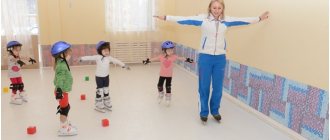Aikido for children, Aikido OldSchool, 3.5+
Address: ZELAO, Zelenogradsk, 15th microdistrict, building 1514. + aikido-oldschool
The Aikido OldSchool aikido school is aimed at children from 3.5 years old. Aikido is not just one of the many martial arts, it is an entire system that strengthens not only the body, but also develops the personal qualities of a child. This school is taught by authorized Aikido teachers, winners of international competitions, who have completed practice in Japan.
Rhythmic gymnastics for children, Rhythmic gymnastics school Gracia-M, 3+
Address: metro station Universitet, Vernadskogo Ave., 21 bldg. 3. +7 grazia-m.ru

Even if you do not plan for your child to follow in the footsteps of Kabaeva and Averina, rhythmic gymnastics will help the correct formation of ligaments, improve stretching, posture and coordination of movements, and lay the foundation for understanding and subsequent serious study of choreography. In addition, in this sports section for children from 3 years old, not only girls, but also boys are welcome to participate in classes - there are specialized groups for developmental gymnastics for children.
How to choose a sports section for a child and not discourage the desire to exercise
Moscow 24 columnist, fitness expert and TV presenter Eduard Kanevsky told how to teach a child to regular physical activity so that training brings him pleasure, and the habit of training is formed for many years.
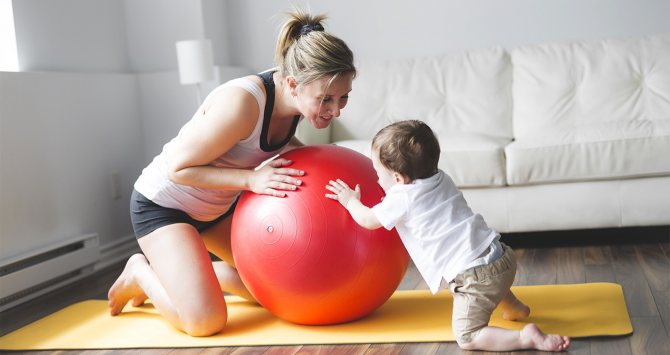
Photo: depositphotos/Lopolo
I have been involved in sports for twenty-seven years and during this period, especially as a child, I tried different disciplines, experimented and searched for myself. After years of trial and error, I came to strength sports, where I discovered my potential, eventually receiving the title of Master of Sports.
An important point: my parents never forced me to train. I wanted this myself and went to the sections with pleasure. And, looking back, I understand that my conscious choice had an extremely positive impact not only on my health, but also on my career. Therefore, when my daughter was born, I began to think about which section to send her to in order to form a good habit for life. Moreover, without ambitions for a serious career.
It is the habit that is important, and a sports career is only one of the possible options for a child to become interested in one or another sport. So where should I send my child?
Just kids If we are talking about preschool children and even very young children, then general physical training (GPP) groups are ideal. Many similar classes are now offered in large fitness clubs, which naturally affects the cost of attendance. Therefore, you should not forget about sports schools, of which there are many in Moscow, and the cost of classes in them is significantly lower. There are also directions for activities with small children in the pool.
I recommend attending both classes. This will help develop in the child not only flexibility, coordination, and endurance during general physical training classes, but will also help in the formation of correct posture and contribute to the development of joint mobility. And when practicing in the pool, you will also accustom your child to water.
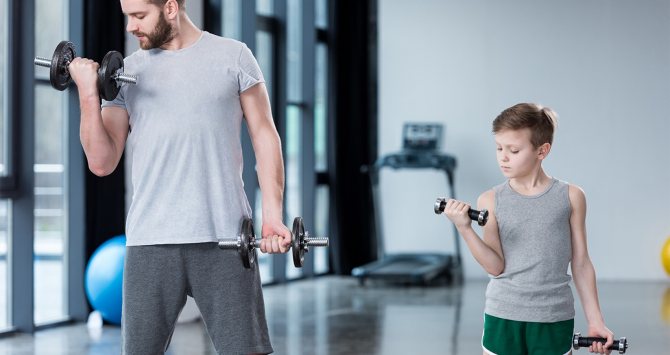
Photo: depositphotos/TarasMalyarevich
Older children As a rule, most sports sections recruit children after 4-5 years. From this age, the parental “experiment” in choosing a sport begins, which, as adults, often seems to us, is ideal for our child.
We sent our daughter to rhythmic gymnastics. For the first six months everything went well, until the child went to training camp. On the first day, classes were held twice for three hours, and the next day she woke up with severe muscle pain. And this is not surprising, because the training camp is a completely different level of training. Moreover, it turned out that my daughter doesn’t stretch well and “putting her on the splits” is quite difficult.
In rhythmic gymnastics, the pulling is strong and painful, so during classes you can often hear children crying.
No, I’m not scaring you or dissuading you, but if a child categorically refuses to study, you definitely shouldn’t force him. Conversely, if you think that the loads are too intense, but the child likes it, it is better to give him the opportunity to walk regularly.
Many parents are concerned about their children’s diet when doing rhythmic gymnastics. I myself was sincerely surprised that the girls lost weight during the training camp! And this is absolutely normal for this discipline, which, of course, horrifies alarmed parents, and even more so grandparents.
One way or another, we took our daughter out of rhythmic gymnastics and sent her to acrobatics. I would like to dwell on this sport separately: acrobatics is the basic sport for further development in any other discipline.
Acrobatics develops coordination, endurance, flexibility and stretching.

Photo: depositphotos/Kzenon
This sport is suitable for absolutely everyone, both boys and girls. One of the additional advantages of acrobatics is that children work exclusively with their own body weight, and for training they do not need to buy expensive equipment. All you need is a T-shirt, shorts and socks. And the classes themselves are inexpensive. On average, the sections provide two to three training sessions per week for an hour, which is especially important for those parents who would not like to “overload” their children with excess load.
I also recommend visiting the pool for older children. Sitting at a desk for a long time or doing homework causes schoolchildren to have an eternal problem with posture. The pool forms a good and straight back, including by strengthening the muscles.
As a child ages, he or she may change sports several times. And since we are talking about habit, and not about serious sporting ambitions, it is better to support the child’s desire to try something new. It is clear that not all parents can physically afford to pay for a very expensive or rare sport, but if such an opportunity exists, try to let the child take advantage of it.
In our case, acrobatics remained as basic loads. In addition, my daughter has already tried dancing, both break and hip-hop. And now I’ve switched to aerial gymnastics, which I enjoy very much and I really like to go to training. Agree, this is the most important thing!
Figure skating for beginners, School of Anastasia Grebenkina, 3+
Address: metro station Sokolniki, st. B. Tikhonovskaya, house 2, building 1 (Ice complex "Academy "Spartak") +7 985 799-1-799 grebenkina.ru

Figure skating is perhaps the most popular sport in our country today. Strength, beauty, grace - this is what attracts both spectators and parents who dream of seeing their child on the ice. For your first steps in this sport, the figure skating school of Anastasia Grebenkina, a famous figure skater in the past, is suitable. Sports classes for children from 3 years old are held here using a specialized method for amateurs, which will be a good start for future achievements.
Which section should I send the boy to?
When deciding which section to send a child to, you need to take into account his age and physiology. For example, heavy loads on the musculoskeletal system are unacceptable for children under 5 years of age. During the first five years of a child’s life, a child’s bones are actively developing, and intense training will only harm them. But flexibility can be developed from an early age.
Which sports are preferable at what age:
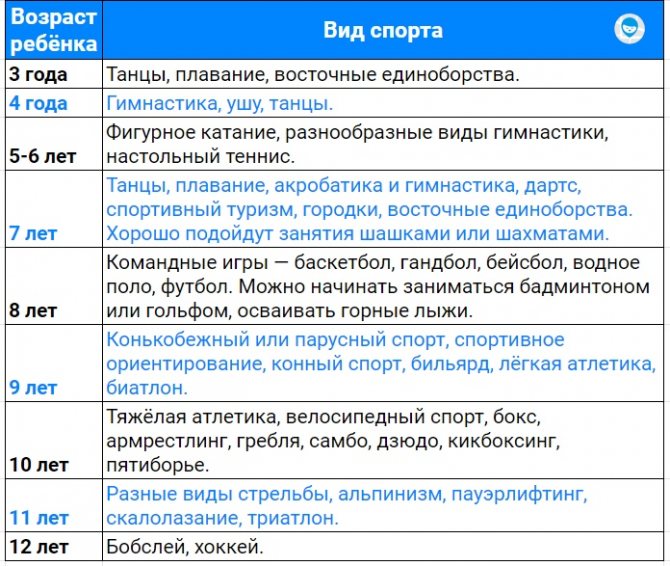
Let's look at the advantages and disadvantages of different sports. This information is necessary to make an informed decision.
Figure skating
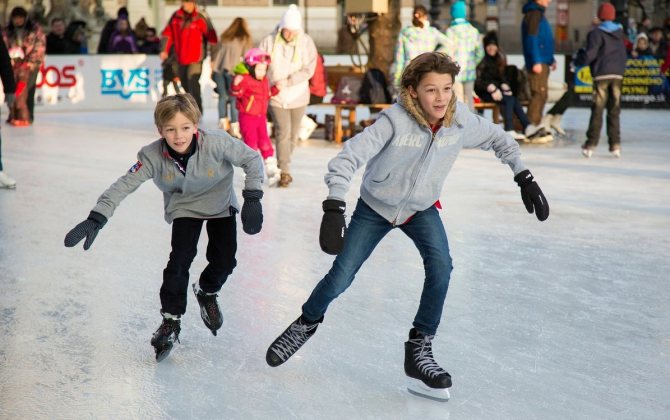
This is a speed skating sport that belongs to complex coordination sports.
Advantages:
- Coordination of movements improves, the eye develops, and flexibility appears.
- The load is distributed across all muscle groups.
- The immune system is strengthened, the child becomes more resilient and efficient.
- Beneficial for the cardiovascular and respiratory systems.
Flaws:
- There is a possibility of injury.
- It is difficult to get classes with a good trainer.
- Considerable financial costs are required.
Contraindications:
- Flat feet.
- Neurological problems.
- Poor eyesight.
- Lung diseases.
- Problems with the vestibular system.
Tennis
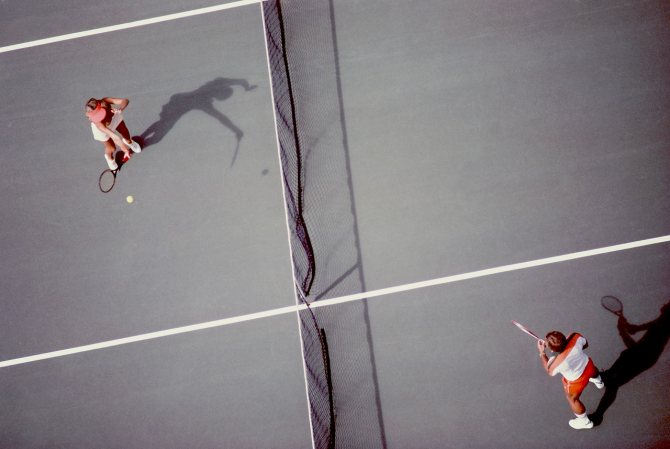
This is a sport in which the opponents are two players or two teams, each consisting of two participants. A tennis player uses rackets to send the ball to the opponent's side; his goal is to prevent the opponent from reflecting the ball onto his playing field.
Advantages:
- Positively affects the cardiovascular system.
- Coordination develops, reaction and endurance improve.
- Low risk of injury.
- The child learns to choose tactics and strategy.
Flaws:
- Classes can be quite expensive.
- If the load is distributed incorrectly, there is a risk of developing scoliosis.
Contraindications:
- Peptic ulcer disease.
- Vision problems.
- Disorders of the musculoskeletal system.
Swimming
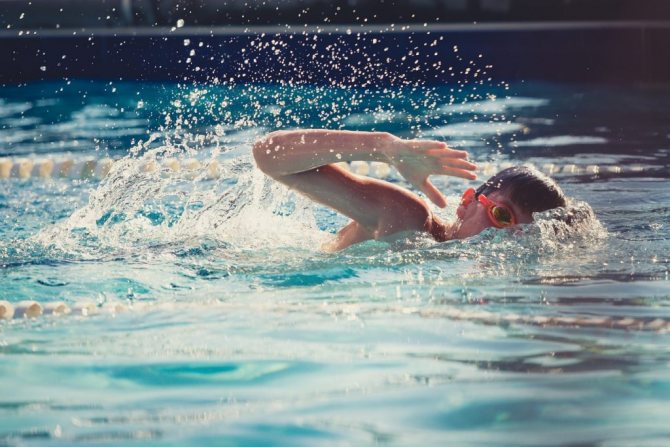
A sport whose essence is to overcome various distances by swimming in the shortest time.
Advantages:
- Immunity is strengthened.
- Good rehabilitation for children who have undergone surgery or injury.
- Exercise prevents spinal diseases and colds.
- Swimming is good for blood circulation.
Flaws:
- Chlorinated water can cause allergic reactions and chronic rhinitis.
- After starting systematic exercise, colds are likely.
Contraindications:
- Exacerbation of any chronic diseases.
- Heart disease.
- Viral diseases.
- Skin diseases.
- Kidney problems.
- Cramps.
Hockey
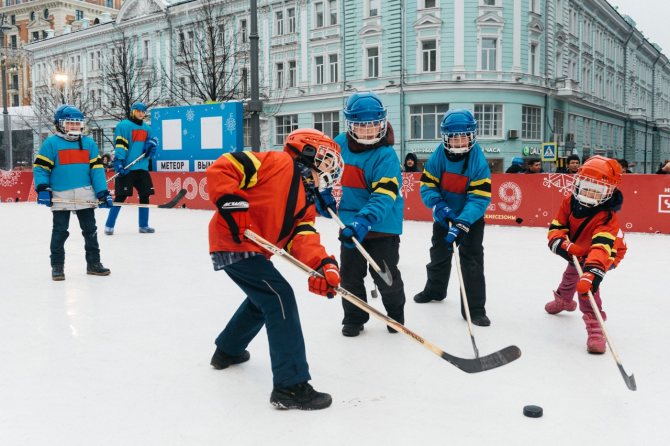
A sports team game with sticks and a ball (or puck) on ice or grass.
Advantages:
- A sense of balance appears, endurance and coordination actively develop.
- The immune system and musculoskeletal system are noticeably strengthened.
- Positive effect on the nervous system.
- Developing responsibility, the ability to organize oneself, and discipline.
Flaws:
- There is a high risk of injury.
- Good equipment costs a lot of money.
Contraindications:
- Vision problems.
- Flat feet.
- Asthma.
- Various diseases of the gastrointestinal tract.
- Heart disease.
Martial arts
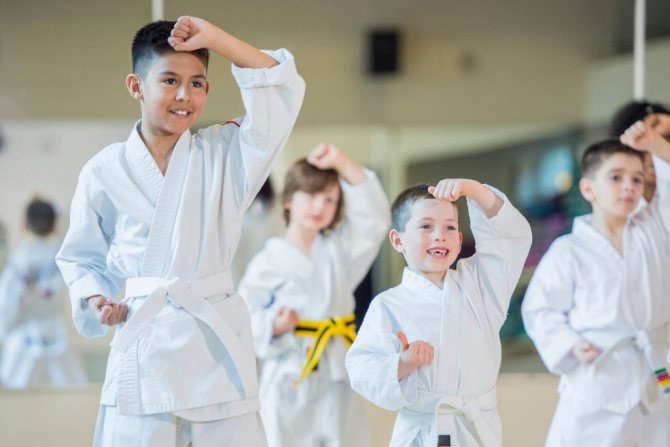
They are conventionally divided into three groups: Chinese, Japanese and Thai types of martial arts. Chinese martial arts involve mostly self-defense, and the main strategy is to use the opponent's strength against him. The most famous: wushu (kung fu), tui shou, sanda.
Japanese martial arts are characterized by the use of throwing techniques and force on the joints. The most famous: jiu-jitsu, judo, karate, aikido.
Thai boxing involves the use of powerful combat strikes, so it is recommended to start practicing this sport no earlier than 12 years of age.
Advantages:
- Ability to protect yourself.
- Active work on yourself, the opportunity to cope with fears and complexes.
- Cultivating courage.
- Harmonious physical development.
Flaws:
- Success in mastering martial arts depends entirely on the coach, so it is very important and difficult to find a good mentor. It is necessary that the child does not become pugnacious, but learns the basics of Eastern philosophy on which martial arts are based.
- There is a small risk of injury.
Contraindications:
- Disorders of the musculoskeletal system.
- Vision problems.
- Kidney diseases.
- Diseases of the cardiovascular system.
Dancing

There are several types of dances: Latin American (rumba, samba, cha-cha-cha), European - classical dances (tango, waltzes and others), modern (RnB, Hip-Hop, Jazz).
Advantages:
- Developing flexibility and dexterity, the body becomes more flexible.
- Useful for coordination of movements.
- Good taste is formed.
- Excellent prevention of colds.
- Development of the respiratory system.
Flaws:
- Large financial investments are required.
- There is a risk of injury.
- There is a lot of competition in this sport, and negative experiences are possible.
- Dancing puts a lot of stress on the heart.
Contraindications:
- Flat feet.
- Problems of the cardiovascular system.
- Vertebral hernias.
Kickboxing
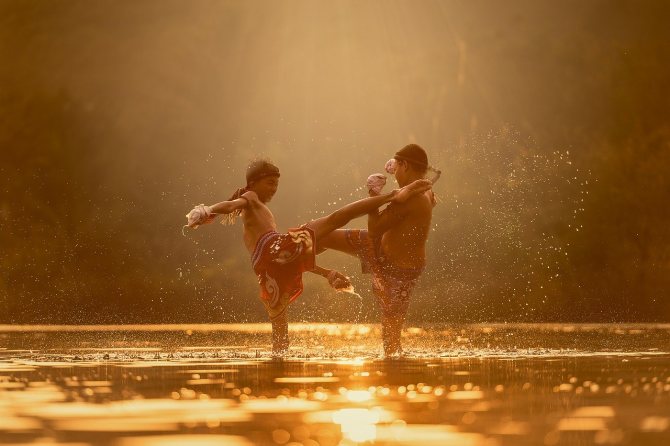
This is a contact type of martial arts in which both punches and kicks are acceptable.
Advantages:
- Muscles are actively developing.
- The child gets rid of fears, complexes, stress and various negative emotions.
- Positive effect on the development of coordination, reaction and posture.
- Excellent strength load.
Flaws:
- Highly traumatic competitions, especially in the directions.
- Undeveloped organizational aspects (training programs are not well thought out and there are no clear rules for conducting fights).
Contraindications:
- Any chronic disease in the acute stage.
- Problems with joints or spine.
Capoeira

Photo source: commons.wikimedia.org. Author: bongo vongo
Brazilian national martial art, in which elements of dance, acrobatics, and games found their place.
Advantages:
- Muscles are actively developing.
- The child gets rid of fears, complexes, stress and various negative emotions.
- Positive effect on the development of coordination, reaction and posture.
- Excellent strength load.
Flaws:
There is only one main drawback - it is not easy to find a good professional trainer. This sport is not very popular yet, so there are few good mentors.
Contraindications:
- Injuries.
- Problems of the cardiovascular system.
Acrobatics
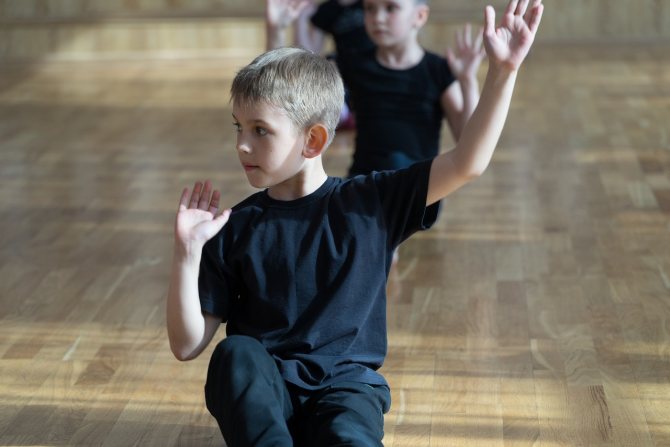
One of the types of gymnastics, which includes exercises for agility, flexibility, jumping ability, strength, and balancing.
Advantages:
- Acrobatics is a good way to use up excess energy.
- Metabolism improves.
- Positive effect on the child’s psyche and mental activity.
- Uniform load on all muscle groups.
Flaws:
The main disadvantage is that it is easy to get injured. Most often these are sprains and various bruises.
Contraindications:
- Epilepsy.
- Problems with the heart and blood vessels.
- Diseases of the musculoskeletal system.
- Myopia.
- Rachiocampsis.
Horseback Riding
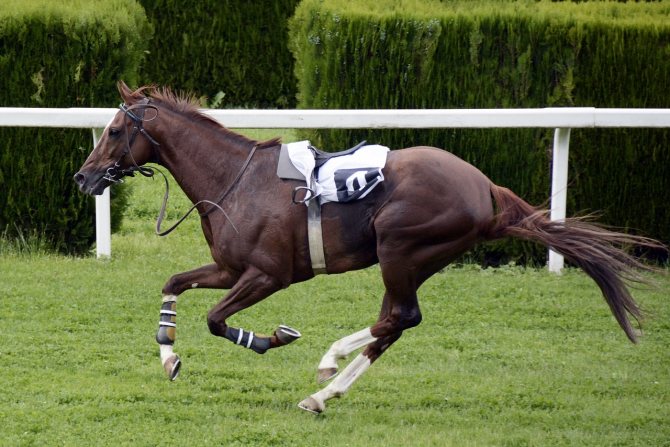
Involves types of competitions, sports games and exercises using riding and the participation of horses.
Advantages:
- Regular communication with an animal has a positive effect on your mental state.
- Good relaxation.
- Development of a sense of balance, muscles, coordination.
Flaws:
The only drawback is that such a sport is not always available. There may not be a stable nearby, and the training itself will require significant financial costs.
Contraindications:
- Heart problems.
- Risk of thrombosis.
Diving, Dmitry Sautin School, 3-4+
Address: metro station Prospekt Mira, Olimpiysky Prospekt, 16 bldg. +7 (925) 328 –60- 28 sautindivingschool.ru
Diving is a fascinating sport that develops coordination of movements and the muscular corset of the body. In addition, diving is impossible without the ability to swim, therefore, by sending your child to this section, you can say, “killing two birds with one stone.” Classes at this school, under the guidance of the famous athlete Dmitry Sautin, take place in two stages: an hour in the trampoline room, where jumps are perfected, and an hour in the pool. In addition, this sports section for children from three years old is aimed primarily at amateurs, and if you want to send your child to sports for health reasons, this is the best solution.
“How and what kind of sport to choose for a boy” consultation on the topic
DEAR PARENTS!
TODAY WE WILL TALK ABOUT HOW TO CHOOSE A SPORT FOR A BOY
All parents understand how important it is from an early age to accustom their fidget to a healthy lifestyle, where sport plays an important role. Therefore, caring mothers and fathers very early are puzzled by the question of which of the popular sections to enroll their little son in. Now let's try to find out which sports are considered the best for a boy at a certain age.
Sports for boys aged 3-6 years.
At this age, every baby is very energetic. And this energy needs to be given the right direction. For a son at this age, playing and dancing sections and swimming will be ideal, which, by the way, can be practiced from the first days of life if desired. Swimming has virtually no contraindications. But if a fidget has certain problems with blood vessels or the heart, then it is still better to refuse this sport. If your mischievous child is interested in strength sports, then he can be offered one of the aikido sections. Often, martial arts do not have any age restrictions and you can enroll a child starting from three and a half years old.
Is the boy already 4 years old? Then offer him a section to choose from - wushu, sports dancing or gymnastics. Over time, the child will independently feel the rhythm, become more flexible, and be able to develop muscle strength. However, such sports (except wushu) are not recommended for children with neurological problems, or if cardiovascular pathology is detected. When the boy is five, he will be able to choose football or hockey. These sports are also considered very popular, as are various martial arts. In addition, they learn to interact as part of a team. Thanks to football, the child will be able to develop the muscles and ligaments of the legs and back. As for hockey, it will teach the fidget to keep balance on the ice, the child will have excellent reactions and the ability to concentrate. But before you enroll your son in one or another section, you need to remember that all these sports are dangerous due to injury. Therefore, if a fidget has disorders in the musculoskeletal system, it is better to choose something else.
When my son is 6, he will be able to try his hand at one of the interesting sports - basketball or volleyball. Alpine skiing may seem no less interesting for a mischievous person. Thanks to such interesting activities, the fidget will develop endurance and improve the functioning of the cardiovascular and respiratory systems. Muscles and ligaments will strengthen, joints will become more mobile and strong. Thanks to skates, it will be possible to improve metabolism and help with scoliosis.
What to offer a seven year old boy? If a fidget is already seven years old, he can be enrolled in boxing or athletics. At the same time, be sure to talk to your son in advance and find out what he dreams of, what he would like to choose.
Thanks to such sports, shy children become more self-confident, develop coordination, muscle strength, strengthen the musculoskeletal system, and increase their own endurance. But if a child has neurological or vascular problems, it is better to immediately abandon such sports.
Will the character of the little athlete change? Before sending a boy to one section or another, it is important to take into account the characteristics of his character. However, while exercising, a fidget's character may change. At the same time, traits will begin to form that will help you achieve success in any business in the future. So, thanks to eastern martial arts, the boy will become more patient and will be able to show his restraint. The eastern philosophy that accompanies training in martial arts teaches one to think logically, to choose the only correct strategy of behavior.
The boy will become more flexible, confident, and his reaction will speed up. He will also learn to adequately assess his own capabilities. If a boy is initially melancholic or phlegmatic, then with the help of such a sport he will become more confident. As for choleric people, they will be able to direct their irrepressible energy in the right direction.
Team games such as football, hockey and basketball will teach a boy to interact with others and help develop communication skills.
Thanks to them, a shy child will be able to find friends faster. With the help of winter sports, you can learn to overcome difficulties and at the same time a fidget will develop a leadership character. As for creative areas - dancing and gymnastics, they will help develop a sense of rhythm, artistry, and make the boy more plastic and flexible.
Whatever sport your child chooses, he will certainly learn to be patient and disciplined. However, when sending your son to any section, do not forget that sports always involve heavy loads, long training sessions and hard work.
At the same time, do not forget to talk to the boy in advance and find out whether it is worth playing sports seriously or whether it will be enough to stay at the amateur level. An athlete’s sports career usually ends very early and the child will need to pay attention to his activities so that he can be realized in the future.
.
Do not forget to take into account the individual characteristics, desires and interests of your child. Listen to what the child himself wants to achieve, in what sport your child wants to show his abilities and his aspirations to be a sports or creative person.
Physical education instructor: Neklyudova Oksana Sergeevna.
Roller sports school for children, RollerSchool.ru, 3-4+
Address: Tulskaya metro station, Kholodilny lane, 3с1. +7 rollerschool.ru
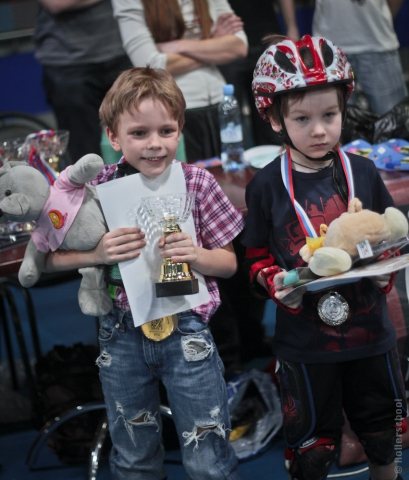
If in the early 90s roller skates were the dream of every child, now this will not surprise anyone. Moreover, in recent years, roller skates have succumbed to the pressure of scooters and electric scooters. At RollerSchool they teach how to roller skate correctly and safely; if you wish, you can rent equipment. The school also periodically holds open lessons.
Abilities and contraindications for sports
It is important for a future athlete to have aptitude for a particular sport. All complex coordination sports - sports and rhythmic gymnastics, diving, trampolining, sports dancing, acrobatic rock and roll, figure skating and synchronized swimming - require good coordination. It’s easy to determine if a child has it: ask him to stand with his eyes closed, spread his arms to the sides and, raising one leg, stand there for at least 10 seconds without losing his balance. In gymnastics, figure, flexibility, jumping ability, and turnout are also important. Parameters such as height are also important (according to purely physical laws, gymnastics is easier for short people), a strong physique and the ability to gain, maintain and lose weight, since its excess and the inability to lose it in time sometimes cost the sports career of many gymnasts, including and very talented.
When admitting to a sports school, coaches also look at parents: from them, with a high degree of probability, they can determine how much a candidate athlete will grow up to be. However, if your child does not have the necessary parameters, this does not mean that he is not capable of achieving success in other sports. There are many disciplines, and each of them has its own requirements for future athletes. Some sports, such as skiing and horse riding, accept everyone regardless of physical characteristics. There are also those in which physical data does not matter at all - these are chess, checkers and the eastern intellectual game called go (paduk), which has recently become increasingly popular. To make the right decision, you should consult a coach.
We must not forget about the health of the child. No agility, flexibility, endurance or immunity acquired as a result of training can outweigh the damage to health resulting from neglecting contraindications. When entering a sports school, a certificate is required stating that practicing this particular discipline is harmless for your child. This point should be approached with full responsibility and not hope that the child will eventually “outgrow” such things as a weak heart or myopia.
Speaking of myopia: unfortunately, in our time this disease is spreading more and more widely and is becoming much younger. Poor vision can not only hinder a child, but can also be aggravated by sports activities. Thus, with myopia, everything that is associated with changes in intracranial or intra-abdominal pressure, tremors and the risk of falls is prohibited. This group includes jumps and upside down flips. Not only the degree of myopia matters, but also the presence of complications in the fundus, the condition of the vitreous body and intraocular pressure. However, we hasten to reassure you: myopia is not an obstacle to various types of shooting - bullet, skeet, as well as from a bow and crossbow.
Each sport has specific contraindications, and what prevents you from doing artistic gymnastics may not have any effect on the health of the skier. The most difficult sports in this regard, requiring ideal health, are weightlifting, boxing, freestyle and Greco-Roman wrestling, ski jumping, as well as high jump, long jump and pole jump.
It is known that playing sports helps solve health problems. This is true, but not always. A single sport is not a cure for everything. Cyclic sports - swimming, cycling, cross-country skiing, biathlon, long-distance running, rowing - improve the functioning of the heart and lungs, and increase endurance. There are also individual characteristics of the body’s reaction to stress: for some, swimming in the pool will strengthen the immune system and help them get sick less often throughout the year, while for others the same activities will provoke a chronic runny nose or bronchitis. Thus, before choosing any specific sport, you should consult a doctor, preferably a sports doctor, who is well aware of the specifics of the impact of a certain type of load on the body.
Rock climbing for children, children's climbing wall Funtopia, 3-4+
Address: metro station VDNKh, Prospekt Mira 119, st. 22, BigWallSport Climbing Center. +7 bigwallsport.ru

On the territory of the BigWallSport rock climbing center there is a children's climbing wall, where even the smallest summit conquerors are welcome. Classes for kids are held in the form of a quest, but they work on such important skills as concentration, dexterity and strength. There is no need to worry about the children - the classes are taught by a professional instructor, insurance is provided and everything is done to ensure that the lesson is injury-free, useful and fun.
What sport will teach a child to stand up for himself, and four more questions for the coach
School bullying, street fights - you cannot predict when a child will need the ability to stand up for himself. But it is better that at a critical moment he already has this skill.
Many parents, already in elementary school, are looking for a martial arts section for their child: to improve health, improve punching, and add self-confidence. But sections are different.
UaUa.info discussed with Thai boxing coach Lyudmila Mezentseva what parents need to know in order to choose a suitable sports direction and a good coach for a student, and how to motivate a child to practice in the section.
Lyudmila Mezentseva head coach of the MMA club Fight Ambition Team

It would seem that the answer suggests itself: in the martial arts section. But there are a number of nuances here.
Parents often want to combine the incompatible: to instill self-defense skills in their child, but in such a way that during training they don’t get bruises, or “God forbid, they don’t get hit in the head.” And they choose non-contact directions: aikido, shotokan, etc.

In non-contact style training, blows are not struck with full force. At best, they are indicated by a light touch.
That is, the child seems to be practicing the technique, but he is not learning to invest in a blow and take it. As a result, he simply does not know what sensations and experiences accompany the blow, how to cope with them, how to avoid them.
I remember the first time I was hit hard in the nose with a glove during sparring. Sudden sharp and previously unknown pain. You stand, gasp for air, tears flow from your eyes by themselves - not from resentment, this is a purely physiological reaction to a blow to your nose, which is not hardened in battles.
Unexpected and intense sensations are simply paralyzing, you cannot think and move, but you need to do something, because the battle continues.
Contact fighting styles give a different result: classical (English) boxing, kickboxing, Thai boxing, sanda, contact karate (Kyokushin, kudo), etc.
In parallel with studying the technique of striking, students get used to light contact. They develop motor skills, learn to invest in a blow and control its force. They get used to taking a blow correctly, absorbing its force, and moving away from it.
Pain no longer shocks them or throws them off balance. Sometimes she even spurs me on to active work.

I will reassure mothers who are afraid that their kids will get their heads knocked off during contact style training.
In the section where the rules allow punches to the head, children are accepted only from 10-12 years old.
During training, all training is carried out in protective equipment, even if we are talking about very little ones who still don’t really understand how to put the weight of their body into a blow.
Hockey for children, Denis Abdullin Hockey Academy, 3+
Address: m. Konkovo st. Ostrovityanova, 10 (Ice complex Ostrov). +7 dahockey.ru
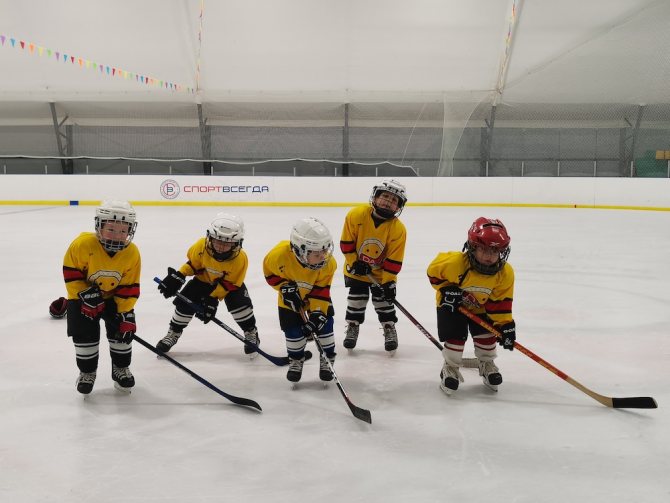
The project of the Denis Abdullin Hockey Academy “DASHKOLNIKI” is one of those sections where you can send a boy at the age of three. The sports methodology of this hockey academy was created by professionals taking into account the character traits of children, so your young ice conqueror will definitely not get bored. In addition, playing hockey develops strength, agility, teamwork and teaches early strategic decisions.
Developmental gymnastics for kids, European Gymnastics Center, 3+
Address: metro station Dynamo, Leningradsky Prospekt 37B. +7, ext.100 europegym.ru
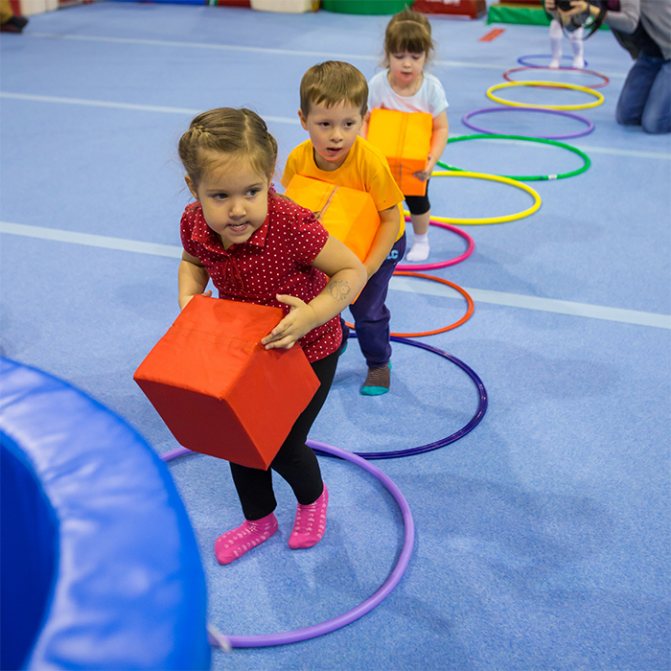
If you have not yet decided where to send your child from 3 years old, then specialists from the European Gymnastics Center will come to the rescue. Recreational gymnastics (developmental gymnastics) classes will not only benefit the baby’s growing body, but will also help determine his sports future. Classes last only 50 minutes, so young athletes do not get bored, but are happy to overcome a fun obstacle course, practice on horizontal bars and stretching, and generally have a fun and useful time.
- share with your friends!
Follow us on Facebook:
Where should I send my 3, 4 and 5 year old child to study?

Good day, dear friend!
We all want our children to grow up healthy in all respects. The question of where to send a child at 3, 4 and 5 years old arises for almost every parent. Most of us consider professional help in child development to be reasonable and even necessary.
Psychologists and preschool education specialists consider the age of 3-4 years to be decisive. The right choice of activities will create a springboard for its further development and form initial skills.

I am not an expert in raising children and I have no desire to pretend to be a “guru” in this matter. I’ll just express my point of view based on personal experience and beliefs .
Non-psychologist's point of view
Having rummaged through the vastness of the World Wide Web, I noticed the following: Most experts recommend first determining the child’s inclinations and the type of his temperament. Then select your activities accordingly.
The logic is this: If you decide that the child is choleric by temperament and prone to physical activity, you can “send” him to the martial arts section or something like that.
Everything seems logical, but I have a couple of questions:
1. What to do with your head? That is, with the development of thinking, if a child practices, for example, karate. Talk that such activities also develop intelligence, it seems to me, is slightly exaggerated.
And vice versa. If a child plays music, what about physical development?
2. About the type of temperament . Let's ask ourselves: Do we know our type of temperament? The division into sanguine people, melancholic people, choleric people and phlegmatic people is very arbitrary. Personally, I find traits of all four types in myself.
What I mean is that classifying a 3-4 year old child as a certain temperament type is a rather dubious task from the point of view of accuracy.
In my opinion: there must be a balance. The development of a child should be harmonious and cover: physical development, creative abilities, development of thinking, development of character .

Combining all this is not so difficult. It is enough to choose two types of activity:
- For physical development. These can be gaming types, martial arts and the like. Child development centers offer a fairly wide selection.
- To develop creativity and thinking.
What to choose?
Some kind of modeling wanders from article to article. What they sculpt there and how it has a beneficial effect on the development of a child’s thinking is a sealed mystery to me. However, maybe so, I won’t argue.
I’ll say what I know: An activity that best combines the development of creativity, thinking and character exists. It's called chess .
The main idea is this: 4-5 years is the right time to introduce a child to chess. Just to introduce, show how the pieces move, what is the point of the game.
If you manage to arouse interest in chess, you can already think about where you can “give” it. That is, choose a section, club or online school.
Why chess?
The uniqueness of chess is that it combines elements of sports, science and art. This is a generally accepted fact. Music, mathematics, the same modeling (it was given to me :)), all this is good, but not so harmonious. Is not it?
Chess develops a whole range of skills necessary for life.
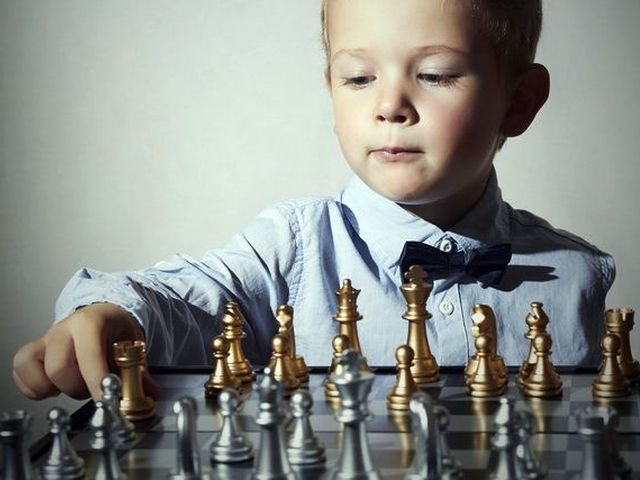
We discussed this issue here
I will repeat briefly:
- Concentration of attention
- Semantic memory
- Disciplined Thinking
- Development of intuition
- Planning solutions
Another important point:
In addition to personal and intellectual development, chess can become a launching pad, a springboard for career development in a variety of fields .
A shared hobby brings people together. Friends made this way remain friends for a long time.
My childhood chess friends are my best friends to this day. We have some kind of special connection. We are our own people and will always help each other. Both in small matters and in large ones.
Personally, chess has helped me several times in getting an attractive job . I gave examples here.
How to choose a chess club?
So, the decision has been made. You introduced your child to chess at the age of 3-4-5. He shows interest in the game. This is good, but what to do next? “Give” to the section? Do not hurry:
- Firstly, in chamat sections there are usually slightly older guys.
- Secondly, not all sections meet certain requirements, which are discussed below.

In my opinion, at the initial stage it is wise to choose a distance learning method for chess .
The “Chess with Zhorik” school provides all the opportunities for initial learning. And the child is under supervision, and you can control the learning online. By the way, even at this stage you can achieve success in a few months.
Everything is fine, but over time the question of a section or circle will still arise. It is important for a child to “go out into the world”, play and communicate with peers.
How to choose sections, circles? Before making a decision, I recommend clarifying a few points that we talked about in this article.
About the importance of balance
In conclusion, let me remind you once again about balance. Chess develops creative abilities, intelligence, logic, and sports qualities. However, we must not forget about physical activity .
Therefore, it is optimal to supplement chess lessons with physically active activities.
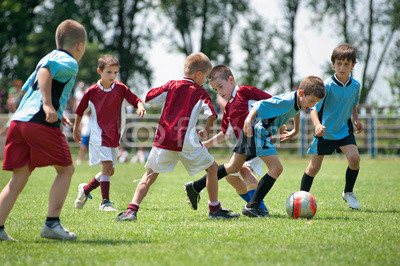
Personally, I was involved in football at the same time. As you already guessed, I didn’t make any Pele, and I didn’t even make Kerzhakov.
However, my strength and endurance have increased. Football faded into the background, but speed and jumping ability remained. I ran a hundred meters in 12 seconds and high jumped one and a half meters.
All this means that when a child is 3-4 years old, it is reasonable to sketch out a plan for his development. The concept, so to speak. And it is important that development be harmonious and not one-sided .
However, as they write on RBC:
The opinion of the authors may not coincide with the opinion of the editors and your opinion.
And that's okay. Let me take my leave then. I hope I'm not too tired.
Thank you for your interest in the article.
If you found it useful, please do the following:
- Share with your friends by clicking on the social media buttons.
- Write a comment (at the bottom of the page)
- Subscribe to blog updates (form under the social media buttons) and receive articles in your email.
Have a good day!

